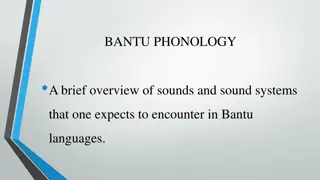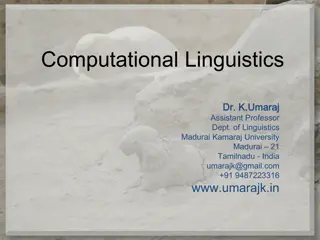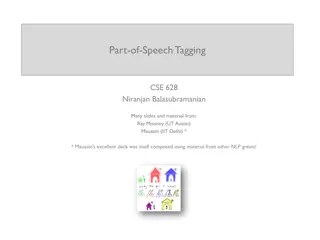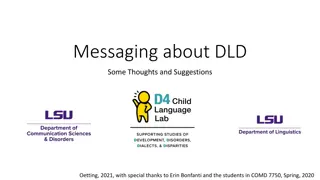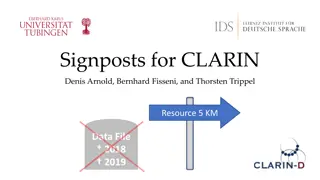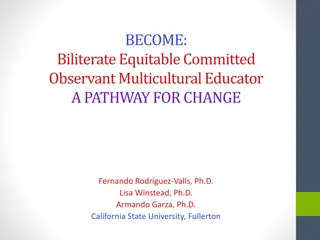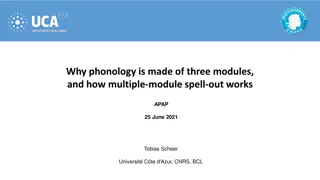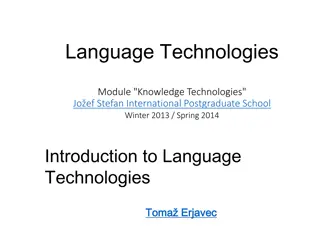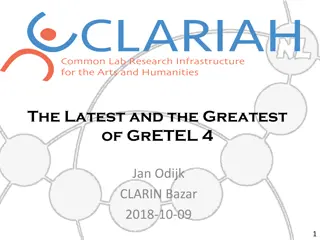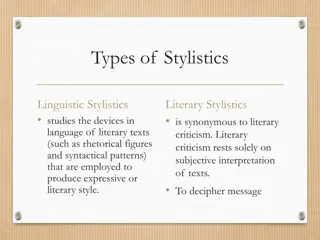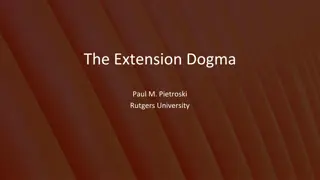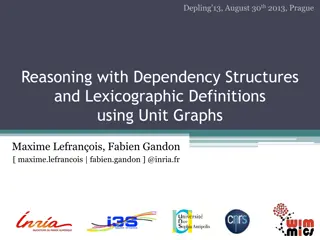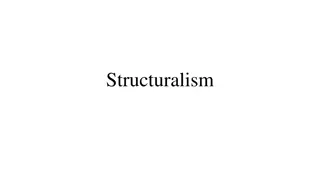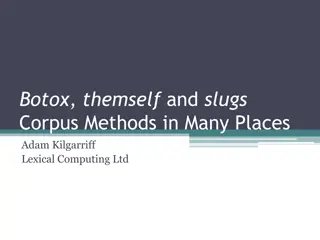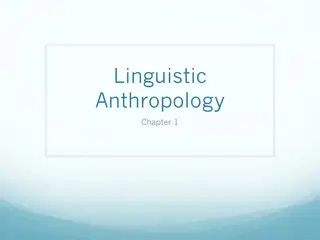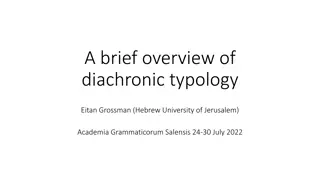
Corpus Linguistics: Methods and Applications
Explore the world of corpus linguistics, from the definition of a corpus to its application in language study. Delve into the distinction between corpus-based and corpus-driven linguistics, modes of communication, and different types of corpora used in linguistic research.
Download Presentation

Please find below an Image/Link to download the presentation.
The content on the website is provided AS IS for your information and personal use only. It may not be sold, licensed, or shared on other websites without obtaining consent from the author. If you encounter any issues during the download, it is possible that the publisher has removed the file from their server.
You are allowed to download the files provided on this website for personal or commercial use, subject to the condition that they are used lawfully. All files are the property of their respective owners.
The content on the website is provided AS IS for your information and personal use only. It may not be sold, licensed, or shared on other websites without obtaining consent from the author.
E N D
Presentation Transcript
Chapter One What is Corpus Linguistics?
the meaning of word Corpus: Corpus, plural corpora; A collection of linguistic data, either compiled as written texts or as a transcription of recorded speech. The main purpose of a corpus is to verify a hypothesis about language - for example, to determine how the usage of a particular sound, word, or syntactic construction varies. Corpus linguistics deals with the principles and practice of using corpora in language study. A computer corpus is a large body of machine-readable texts.
Corpus LINGUISTIC Corpus linguistics is a methodology to obtain and analyze the language data either quantitatively or qualitatively. It can be applied in almost any area of language studies. Corpus linguistics is not a separate branch of linguistics (like e.g. sociolinguistics) or a theory of language.
Features which distinguish different types of studies in corpus linguistics: Corpus-based versus corpus- driven linguistics Mode of communica tion Data collection regime The use of annotated versus unannotated corpora Total accountabili ty versus data selection Multilingu al versus monolingu al corpora
Mode of communication
Corpora of Spoken Language
Corpora of Written language
Corpora of Record paralinguistic features such as gesture
Corpora of Sign Language
corpus-based Vs corpus-driven Linguistics
Corpura Corpus-based - Studies typically use corpus data to explore a theory or hypothesis, typically one established in the current literature, to confirm it, refute it or refine it. - The definition of corpus linguistics as a method support this approach to the use of corpus data in linguistics. Corpus-driven -Linguistics rejects the characterization of corpus linguistics as a method and claims instead that the corpus itself should be the sole source of our hypotheses about language. - It is thus claimed that the corpus itself embodies its own theory of language.
Data collection regimes Monitor Corpora The Web as Corpus Balanced Corpora The Sample Corpus Approach Opportunistic Corpora
MONITOR CORPORA A monitor corpus is a dataset which grows in size over time and contains a variety of materials. The relative proportions of different types of materials may vary over time.
WEB AS CORPUS The standard example is using search engines such as Google to explore the web as a corpus. But many texts on the web contain errors of all sorts. For example: The common spelling errors 8670000 300000000 Recieve Receive 0 10000000 20000000 30000000 40000000
BALANCED CORPORA Balanced corpora, in contrast to monitor corpora and also known as sample corpora, try to represent a particular type of language over a specific span of time. In doing so they seek to be balanced and representative within a particular sampling frame.
OPPORTUNISTIC CORPORA Opportunistic Corpora is not match the description of either a monitor or a sample corpus. These corpora do not adhere to a rigorous sampling frame. They represent nothing more nor less than the data that it was possible to gather for a specific task. Today, an opportunistic approach is often needed with spoken data in particular: converting spoken recordings into machine-readable transcriptions is a very time consuming task.
The general division of language Official majority languages Official minority languages Unofficial languages Endangered languages Official languages are better supplied with corpus data than other for a range of non-linguistic reason.
Annotated vs unannotated corpora
ANNOTATED CORPORA Linguistic analyses encoded in the corpus data itself are usually called corpus annotation. - We may wish to annotate a corpus to show parts of speech, assigning to each word a grammatical category label. - So when we see the word talk in the sentence I heard John's talk and it was the same old thing, we would assign it the category noun in that context. This would often be done using some mnemonic code or tag such as N.
Total accountability vs data selection
Total accountability vs data selection Total accountability Data selection Not necessarily a bad thing Falsifiability Replicability
Monolingual vs multilingual corpora
Monolingual vs multilingual Many corpora are monolingual they contain data in only one language. There are two types of multilingual corpora: Comparable corpora Parallel corpora
Multilingual corpora Comparable Corpus Parallel Corpus contains native language source texts and their translations. In this case, the sampling frame is automatically the same for all the languages in the corpus. contains components in two or more languages that have been collected using the same sampling method, e.g. the same proportions of the texts of the same genres in the same domains in a range of different languages in the same sampling period. The sub corpora of a comparable corpus are not translations of each other.


